A Stitch in Time — James Fox
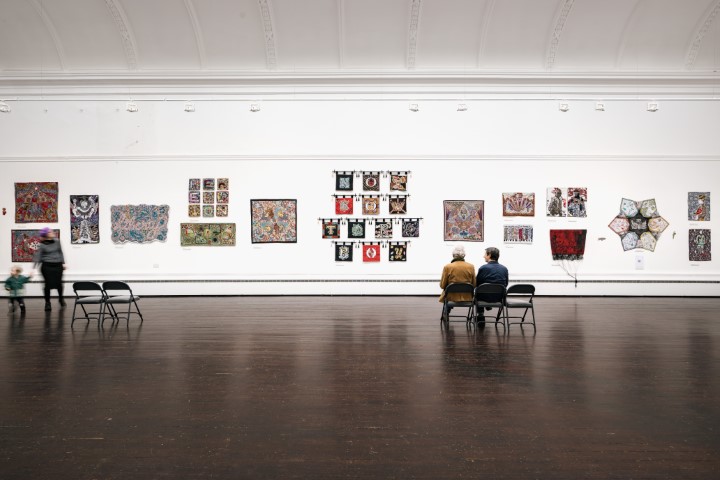
Photo © Robin Zahler
CRAFTS magazine, 2021
After the success of The Sewing Café Lancaster’s exhibition in 2023, we were delighted to welcome acclaimed Scottish textile artist James Fox to Litfest 2024. For this exhibition, which ran from 15 to 23 March in The Gallery at The Storey, James included an installation created for Blackwell Arts and Crafts House, ‘Something in Common’ (2022), but which he adapted to respond to Litfest 2024’s overall theme of ‘Connected Histories’.
The result was ‘Paddocks and Padlocks’, which incorporates commodities that featured in Lancaster’s Transatlantic Trade with the Caribbean and the Americas in the eighteenth and early nineteenth centuries. These commodities included coffee and tobacco, which James writes about below, as well as sugar, cotton and felt, which were the focus of Lancaster Black History Group’s six ‘Connected Histories’ panels (also on show in The Gallery and as part of Litfest’s Online Exhibition).
A Stitch in Time is the first major retrospective of this Lancaster-based artist’s work, which over the years has been steadily gathering a national and international reputation. In the article below, James Fox provides both commentary and context for many of the pieces that were included.
All photographs courtesy of James Fox unless otherwise indicated.
My practice has developed over a thirty-year period working as an artist, educator and researcher. I am currently working towards a practice-based PhD at Lancaster University. Predominantly within the field of textiles, I have exhibited works nationally and internationally, along with fulfilling commissions and art residencies with various organisations, institutions, galleries and museums. These commissions have involved working with museums such as the Harris Museum and Gallery in Preston, where I produced work in response to the museum’s archive of photographs to allow a platform for working-class narratives, sometimes obscured by history.
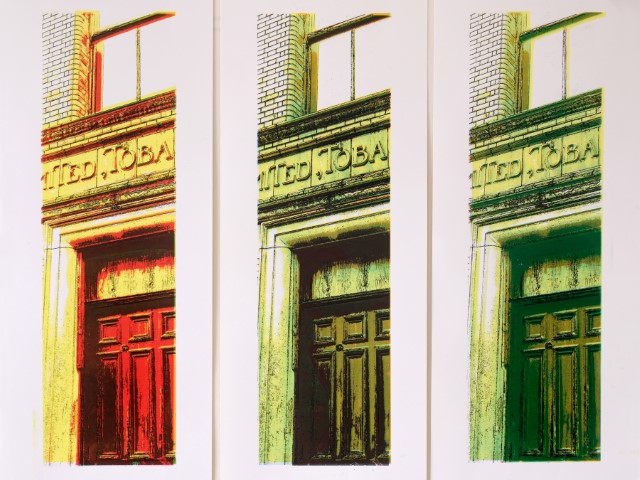
At Buckingham Museum I developed a body of textile work, as well as a series of reduction prints where the word ‘Liberty’ was the catalyst in making connections between several aspects of the area’s history: lace-making, an early form of female emancipation; the radical son of Bedfordshire John Wilkes and the historical slogan ‘Wilkes and Liberty’; and finally the connection to Aylesbury Young Offenders Institute and its appalling history of failed management.
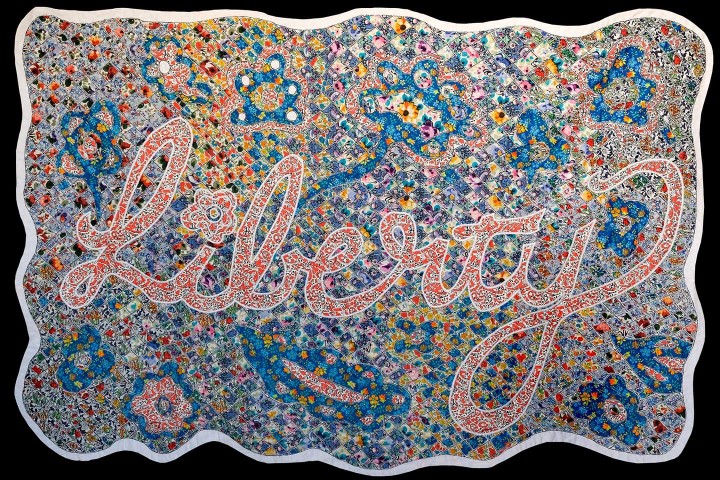
A recent commission for the Working-Class People’s Library, in conjunction with Mid-Pennine Arts, was for a commemorative banner celebrating the ninetieth anniversary of the Kinder Scout Trespass, and which was used as the backdrop for the events around this important date in British history.
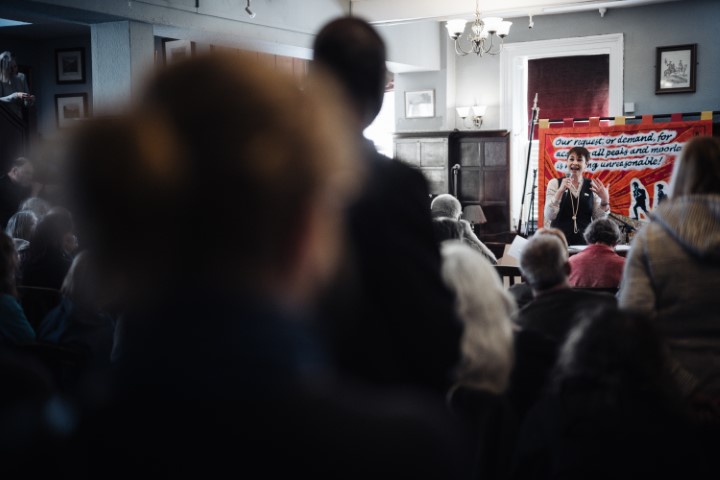
In 2021, I was commissioned by the British Textile Biennial to work over three sites; Helmshore Textile Museum, Lancaster Castle and the Clarion House, Nelson. These sites featured the exhibition ‘Rights, Riots and Routes’, where I presented works looking at the tension between the industrialisation of cotton manufacturing and traditional cottage industry, as a starting point to explore the history of protest and punishment via the Lancashire Loom-breaker Uprising, along with the rise of socialism and the interest in cycling and union fraternities.
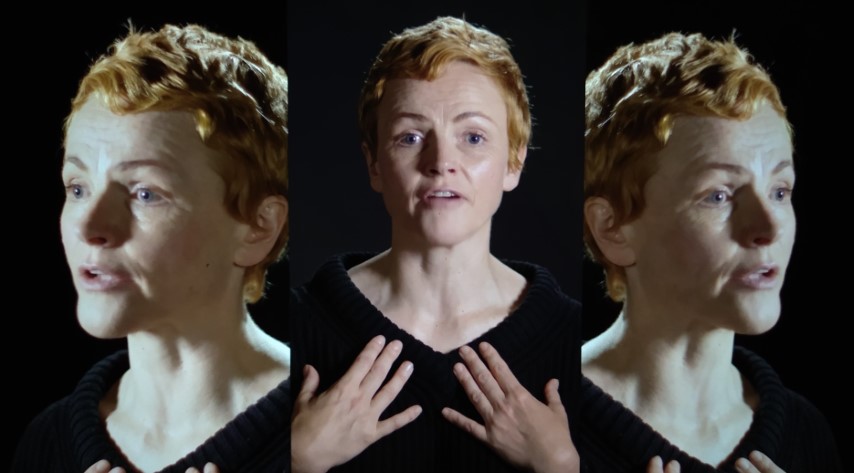
As part of this commission, I collaborated with the actress Maxine Peake for which I wrote and directed a film highlighting the British prison system under the global pandemic.
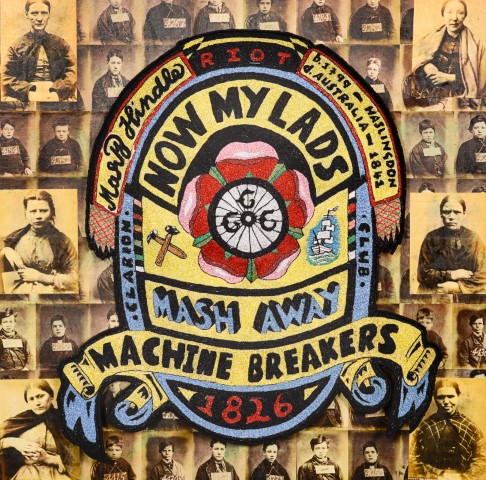
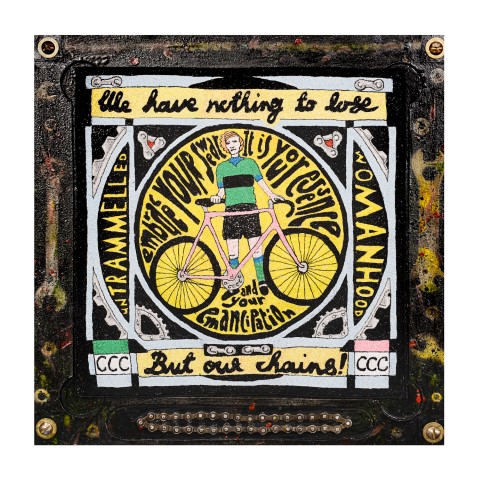
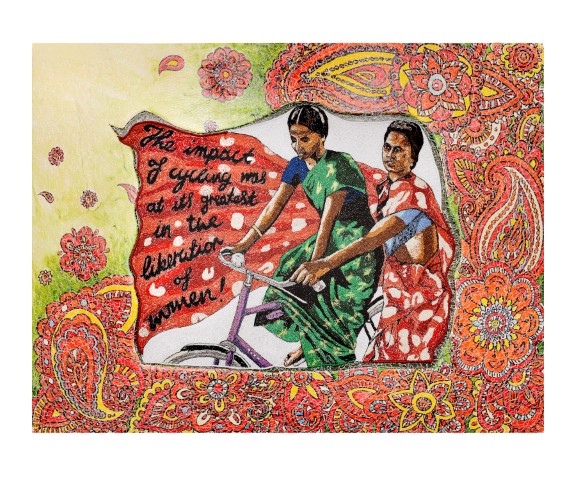
Another notable commission has been for Lakeland Arts at Blackwell Arts and Crafts House, with a solo show over three months in 2022 called ‘Something in Common’, for which I chose paintings from the Abbot Hall Gallery collection to sit alongside a series of my textile, printed, audio and film works (Including an early version of ‘Paddocks and Padlocks’) which looked at land ownership.
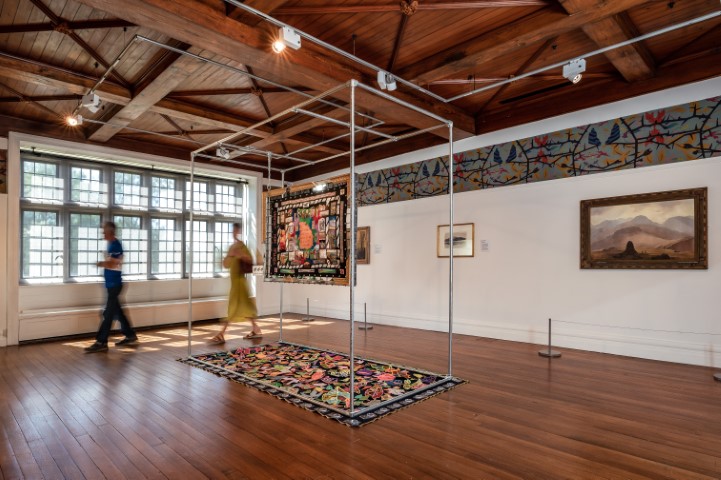
As artist in residence at Lancaster and District Homeless Action Service I facilitated producing art with the clients at the centre which were gifted to local schools and hospitals as a goodwill gesture. While there, I also worked towards a body of work depicting the people I had come to know who used the centre, resulting in an exhibition of drawn and textile portraits of some of these clients. This project featured on the cover of and was the subject of the main article of Embroidery: The Textile Art Magazine (May/June 2019) and as a feature on the BBC Facebook page.
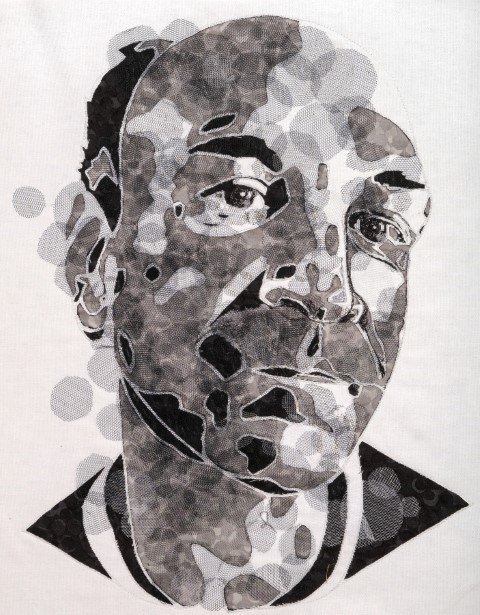
‘Paddocks and Padlocks’ (the rewilding plinth)
A work produced as part of my ongoing PhD research at Lancaster Institute for the Contemporary Arts that investigates the layered history of Tarnbrook, a small village in Lancashire, showing its connections to the global commodity trade and issues around land ownership, from ancient woodland to royal hunting park and potentially back to ancient woodland. Within a period of two hundred years, the landscape was transformed from common pasture until the early 1800s, when it became enclosed farmland through Acts of Parliament, and at the end of that century it changed once again, this time into a sporting estate, which it remains to this day.
This artwork is made up of commodities exported and imported as part of the Transatlantic Trade, set on an artist’s cutting board. The board refers to the land that was ‘cut up’ and reallocated by the ruling class, for the benefit of the ruling class, under Acts of Parliament, rendering the idea of common land redundant, and raising issues around ownership and profit from this area.
The commodities, coffee, sugar, felt, cotton, and tobacco, are set inside carved recycled hardwood tablets, framing arrows that sit in relief. Between them, ancient woodland flowers feature, carved in more hardwood blocks, reflecting the pastoral nature of this land beneath the historical influences that transformed it.
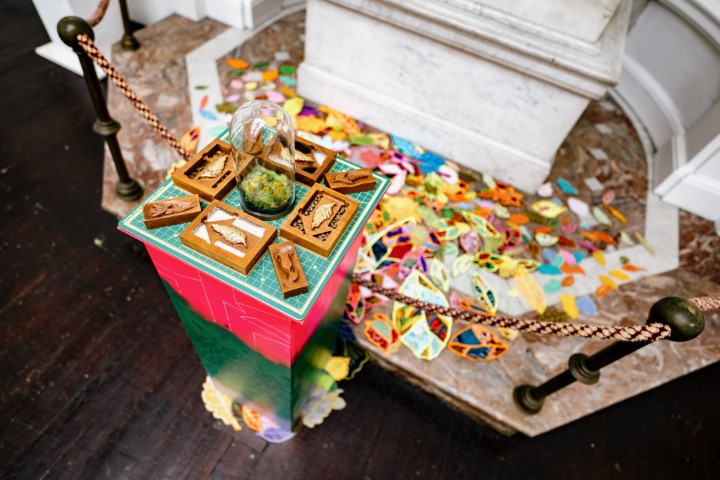
The arrows indicate both the cyclical journey of commodities in the Transatlantic Trade era and also the modern-day issues embedded in land ownership and use; rights of way and freedom to roam. This commerce, together with land grab, made money for a few new businessmen and added to the riches of the already wealthy, at the immeasurable expense of enslaved peoples, and the loss of ancient commons and their rights.

Finally, in the centre of the piece is a microcosmic representation of this area of land, sitting under glass like a museum exhibit, produced, managed, and preserved for the few, as it is now and just as it was in the past; a still life of the unique story which lies embedded within our local area.
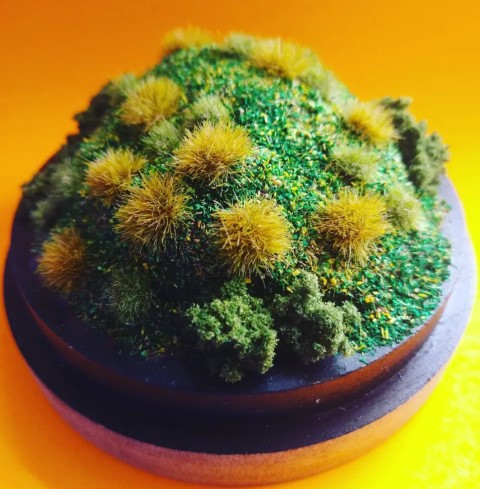
Retrospective

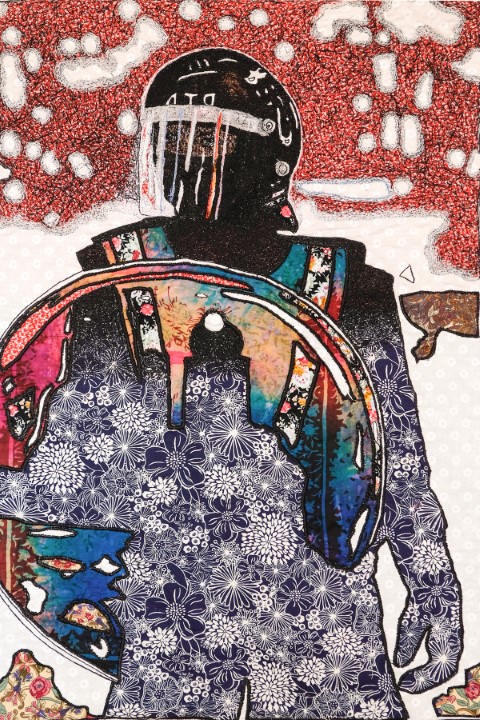
Law and Disorder. 60cm x 75cm x 2. Reverse appliqué with free machine embroidery.
The 2011 inner city uprising of disenfranchised young people across England, sparked by the killing of Mark Duggan, produced five consecutive days of civil disorder. The last time this had happened was during the anti-Catholic riots of 1780. As a consequence, the ‘Gangs Matrix’ database was established and thousands of names were added in a highly racialised response to the disturbances.
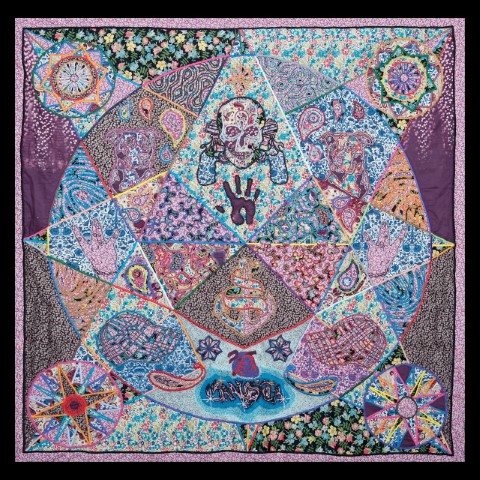
This work expands on the theme of fraternities which run through some of my works. Historically, quilting has been used by groups as a pastime to bring notions of comfort, mending, nostalgia and community cohesion. This work uses these motifs in a playful way with an imagined quilt made by incarcerated drug gangsters.
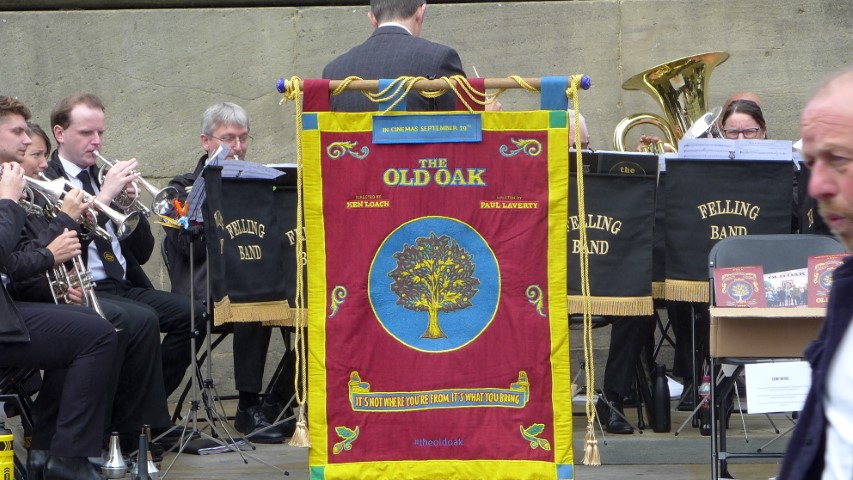
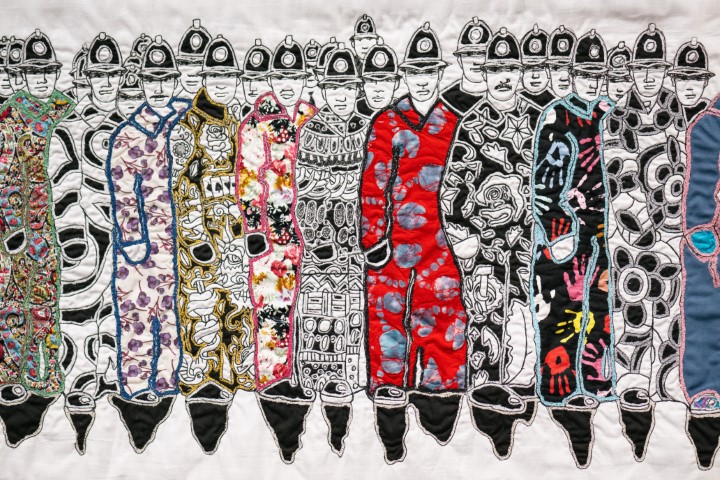
Inspired by stories from the Battle of Orgreave during the 1984 miners’ strike. One of which was that police forces were transported in from other areas around England and told to take identification from their uniforms and to, ‘Go in hard!’ when confronted by the striking miners.
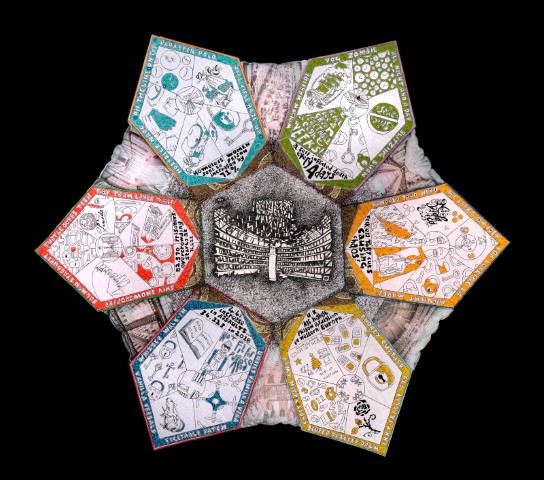
This work highlights the facts and figures generated by a prison system struggling under the weight of persistent underfunding and overcrowding, as well as the group culture created by prisoners in search of a sense of identity, as revealed through their language and art practices.
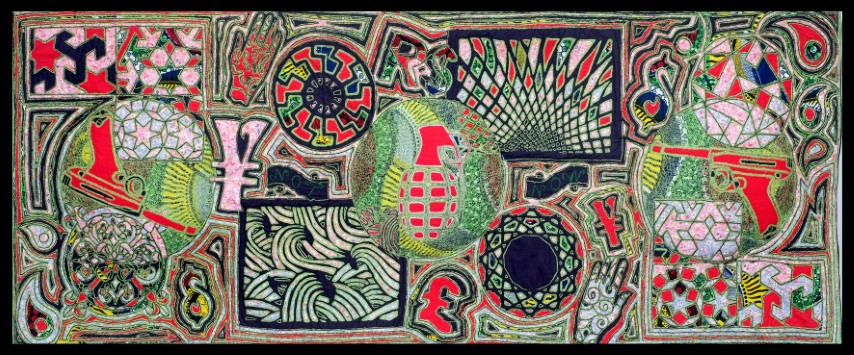
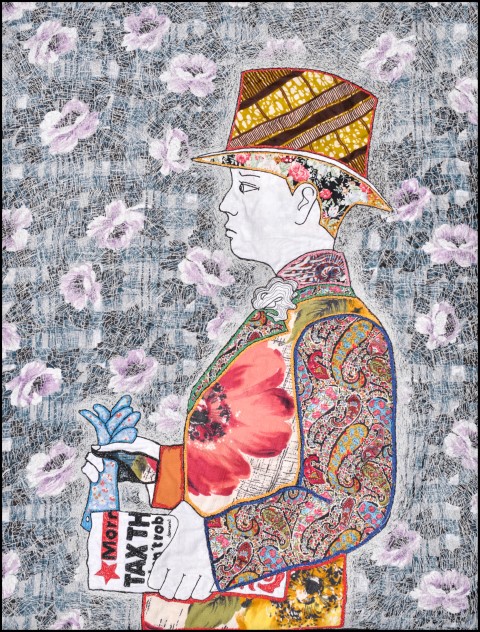
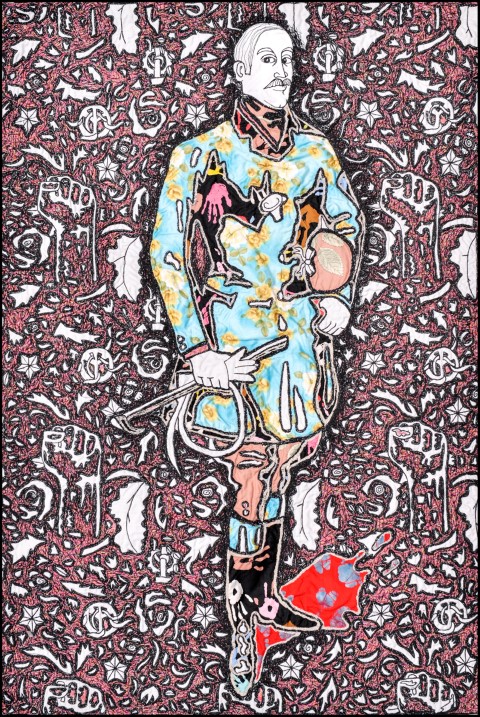
Imperial Cloth and Socialist Background. 60cm x 75cm x 2. Reverse appliqué with free machine embroidery
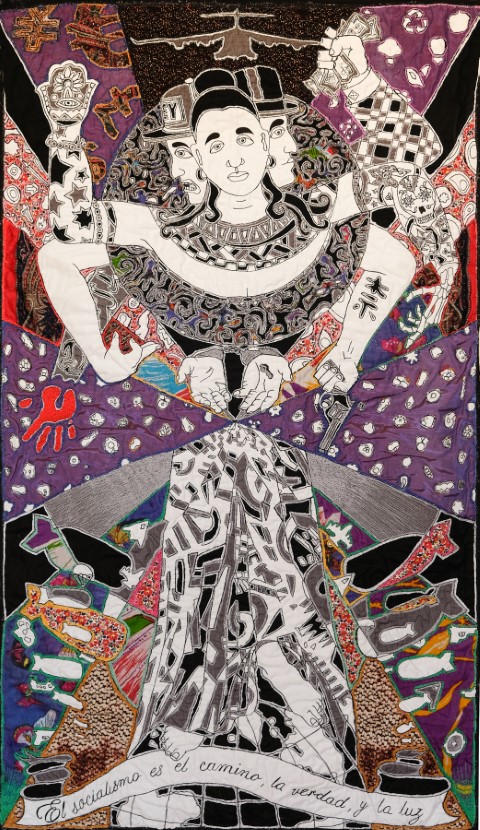
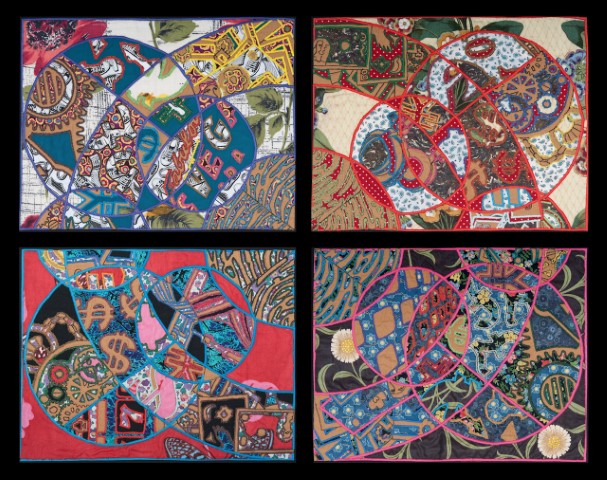
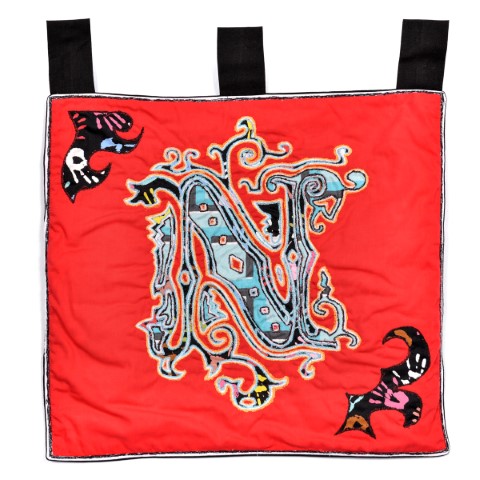
The craftsmanship displayed by the makers of trade union banners is the inspiration behind this work; a set of letters easily carried and ready to be deployed in making up slogans when the need for protest arises, emulating the type setting of the red topped press.
Extracts from the Litfest 2024 Exhibition Comments Book:
‘A fantastic collection of wondrous tapestries – they need time to fully take in all the superb details. I will be back. Thank you.’ – Moyna
‘What an absolute pleasure to come and admire some truly stunning and thoughtful work by James Fox – Absolutely loved it!’ – RS
‘What a wonderful, thought-provoking, beautiful and exquisitely crafted body of work. Thank you!’
‘James’s work is a revelation, funnier than Grayson Perry, more ascerbic than Bansky, and greater craft even than Jeremy Deller. We are lucky to have this amazing retrospective in Lancaster.’ – Caroline McCormick
‘James Fox thank you for giving us hope. You help us to feel part of something. Something working towards a better future.’ – Ken, Carol & Lola
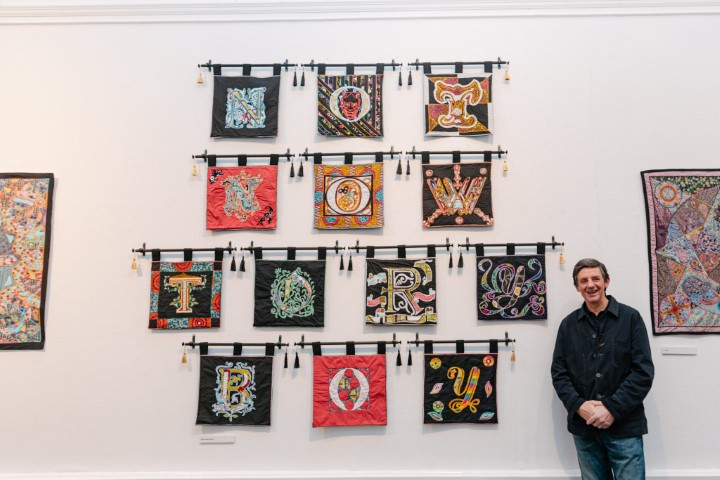
James Fox
‘My practice has developed over a thirty-year period working as an artist, educator and researcher, predominantly within the field of textiles. My work is produced using a variety of media, but mainly freehand machine embroidery, a medium traditionally seen as a female pursuit which I use to express hard-hitting political narratives. I am particularly interested in working-class history, social injustice and fellowships built to combat it. My preferred working methods are collaborative in nature, working alongside communities, curators, other creatives and art groups in producing artefacts that are decorative, engaging, and informative.’
Links to films and articles about James Fox’s work
British Textile Biennial – James Fox: Riots, Rights and Routes
British Textile Biennial (cover)
Lancashire Evening Post – ‘It’s activism, just using cloth!’ Lancashire textile artist James Fox on the power of art, working class representation, and working with Maxine Peake
The Textile Society Awards – BMK Prize for Critical Writing in Textiles 2023 – winner: James Fox
Selvedge – Saddle Stitch
The Knitting and Stitching Show – James Fox: Cycling, Cloth and Conflict
Anne Kelly: Textile Portraits: People and Places in Textile Art – James Fox: Reverse Appliqué
Rights, Riots, Routes – James Fox with Maxine Peake
James Fox: Rights, Riots and Routes – Interview 2021
James Fox – A Stitch in Time (academic paper – St Andrews)

